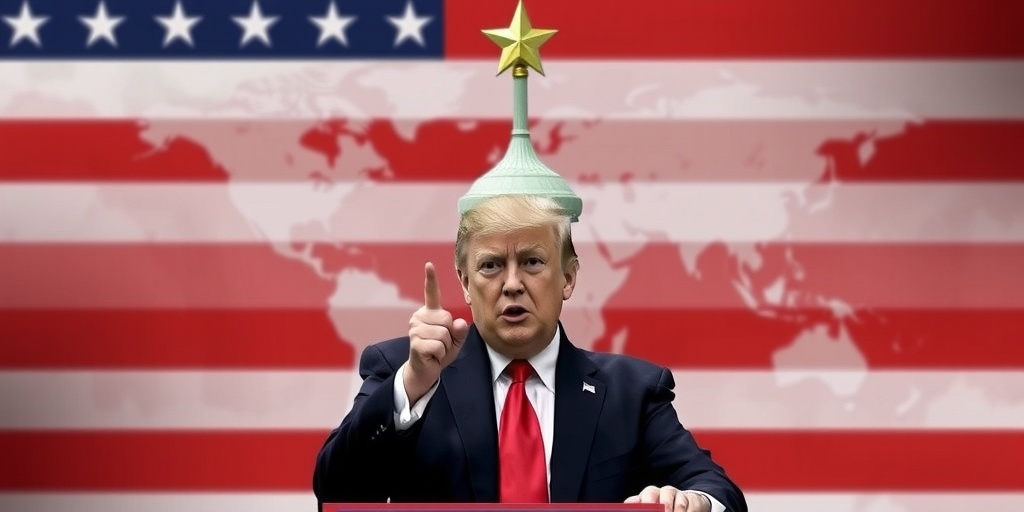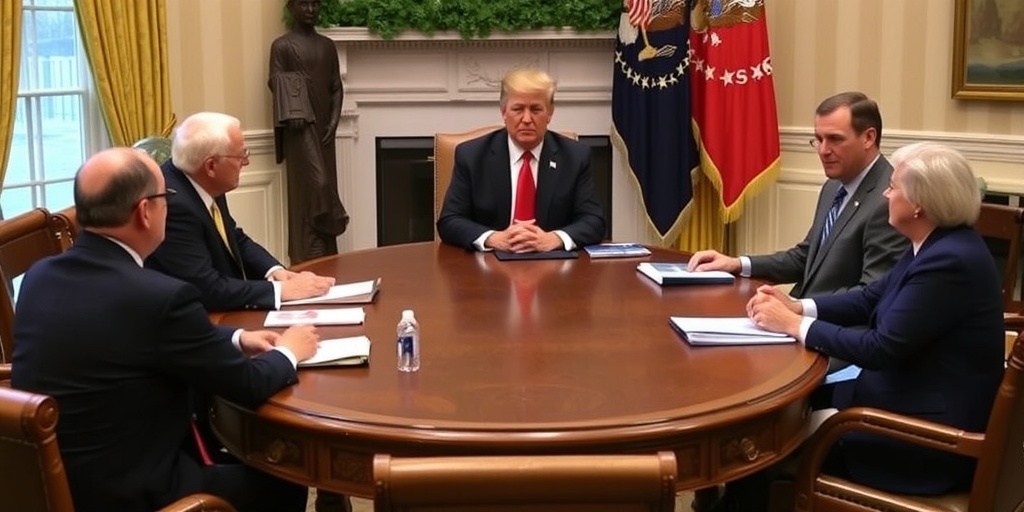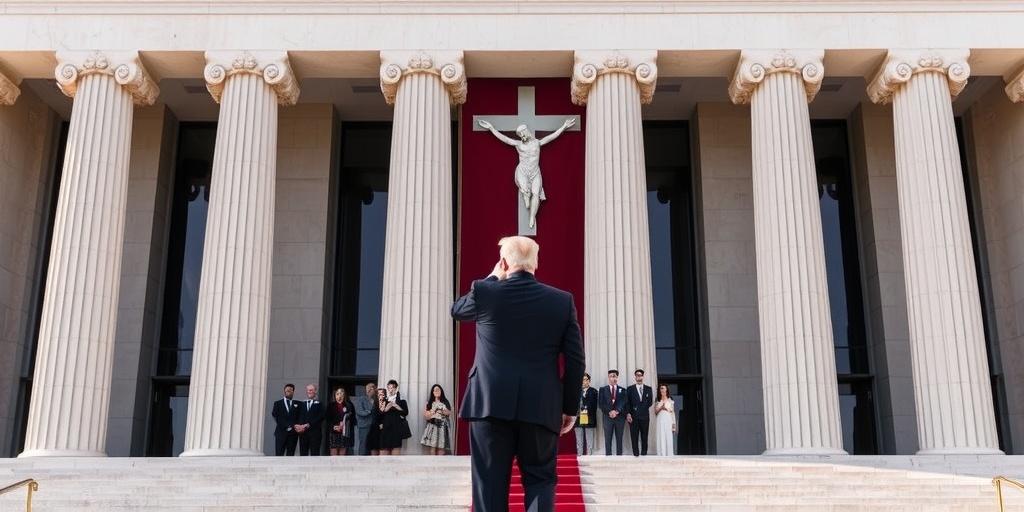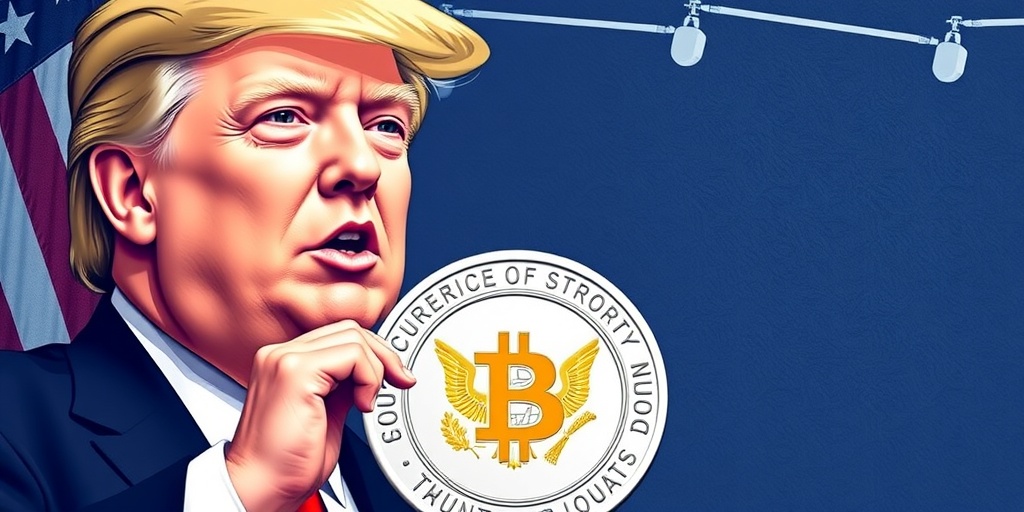Now Reading: Trump’s Extreme ‘America First’ Stance: A Global Divide
-
01
Trump’s Extreme ‘America First’ Stance: A Global Divide
Trump’s Extreme ‘America First’ Stance: A Global Divide

Tensions Rise in U.S. Foreign Relations as President Trump Pursues Aggressive Trade Policies
As President Donald Trump enters the early days of his second term, he has made it abundantly clear that his approach to international relations will reflect a marked departure from the alliance-centered policies of previous administrations. On the campaign trail, Trump openly expressed a desire to adopt a tougher stance against nations that he perceives as exploiting the economic and military strength of the United States, including allies.
This shift has led to a fraying of long-standing military alliances and the implementation of aggressive tariffs against America’s closest neighbors, creating a global atmosphere fraught with tension. Many international leaders appear caught off guard by Trump’s abrupt and confrontational style. The first few weeks of his second term have prompted an atmosphere that feels increasingly like America versus the world.
In response to Trump’s actions, Kaja Kallas, the European Union’s foreign policy chief, commented on social media, stating, “The free world needs a new leader. It’s up to us, Europeans, to take this challenge.” This statement underscores a growing sentiment among European leaders who are re-evaluating their reliance on the United States for global leadership, particularly around issues of Ukraine and the broader Eastern European security environment.
A primary facet of Trump’s new policy direction has involved the imposition of heavy tariffs. A staggering 25 percent tariff has been placed on most imports from Canada and Mexico, alongside multiple rounds of 10 percent levies on imports from China. Trump justifies these measures as necessary retribution against these nations for their perceived failure to address the flow of drugs into the United States.
The immediate fallout has been a swift escalation into a trade war. In response, both China and Canada initiated retaliatory tariffs on U.S. goods shortly after Trump’s announcement. Additionally, Mexico has indicated that it will reveal its own countermeasures, including further tariffs on American products, in the coming days.
Trump’s aggressive trade rhetoric has not stopped at Canada and Mexico. His targets now extend to other nations, as he’s publicly belittled Canada—referring to it as the 51st state—and has dubbed Prime Minister Justin Trudeau a mere “governor.” Interestingly, this antagonistic stance appears to have inadvertently boosted Trudeau’s approval ratings, suggesting that Trump’s approach may be galvanizing national sentiment in those nations.
Further straining U.S. foreign relationships, Trump has made provocative threats to seize control of the Panama Canal and to annex Greenland from Denmark. Additionally, military aid to Ukraine has been frozen amidst ongoing hostilities with Russia. Foreign aid supporting various countries across Africa, South America, and Asia has also seen cuts. Such actions send strong signals about the current administration’s priorities and willingness to disrupt international agreements and agreements for perceived short-term gains.
Despite some of these threats possibly serving as negotiating tactics, Trump has demonstrated an unsettling readiness to follow through, particularly with tariffs and foreign aid restrictions. This unpredictability has created a sense of uncertainty among global leaders and market analysts alike, as determining what constitutes genuine policy and what is merely a rhetoric aimed at domestic clout becomes increasingly challenging.
Nicholas J. Cull, a professor of public diplomacy at the University of Southern California, remarked on the implications of Trump’s foreign policy decisions, stating, “It means uncertainty, because right now, it isn’t always clear what is a tactic and what is actually meant.” He added that the complex nature of Trump’s approach is likely contributing to confusion both domestically and internationally, suggesting that much of his foreign policy may be aimed at rallying his political base rather than addressing global challenges directly.
A recent aggregation of public opinion polls indicates that, at this stage in his second term, slightly more Americans approve of Trump’s performance than disapprove. As the administration continues to navigate these turbulent waters, Trump is set to deliver a joint address to Congress this evening, where he will likely outline his vision and address the nation regarding these critical developments in foreign policy.
With the shifting landscape of U.S. foreign relations under Trump, many are left to wonder about the long-term ramifications of a "U.S. against the world" mindset. The next steps taken by the administration will be closely scrutinized, both at home and abroad, as allies reconsider their positions and strategies in light of an increasingly unilateral U.S. foreign policy.
Stay Informed With the Latest & Most Important News
Previous Post
Next Post
-
 01New technology breakthrough has everyone talking right now
01New technology breakthrough has everyone talking right now -
 02Unbelievable life hack everyone needs to try today
02Unbelievable life hack everyone needs to try today -
 03Fascinating discovery found buried deep beneath the ocean
03Fascinating discovery found buried deep beneath the ocean -
 04Man invents genius device that solves everyday problems
04Man invents genius device that solves everyday problems -
 05Shocking discovery that changes what we know forever
05Shocking discovery that changes what we know forever -
 06Internet goes wild over celebrity’s unexpected fashion choice
06Internet goes wild over celebrity’s unexpected fashion choice -
 07Rare animal sighting stuns scientists and wildlife lovers
07Rare animal sighting stuns scientists and wildlife lovers





















